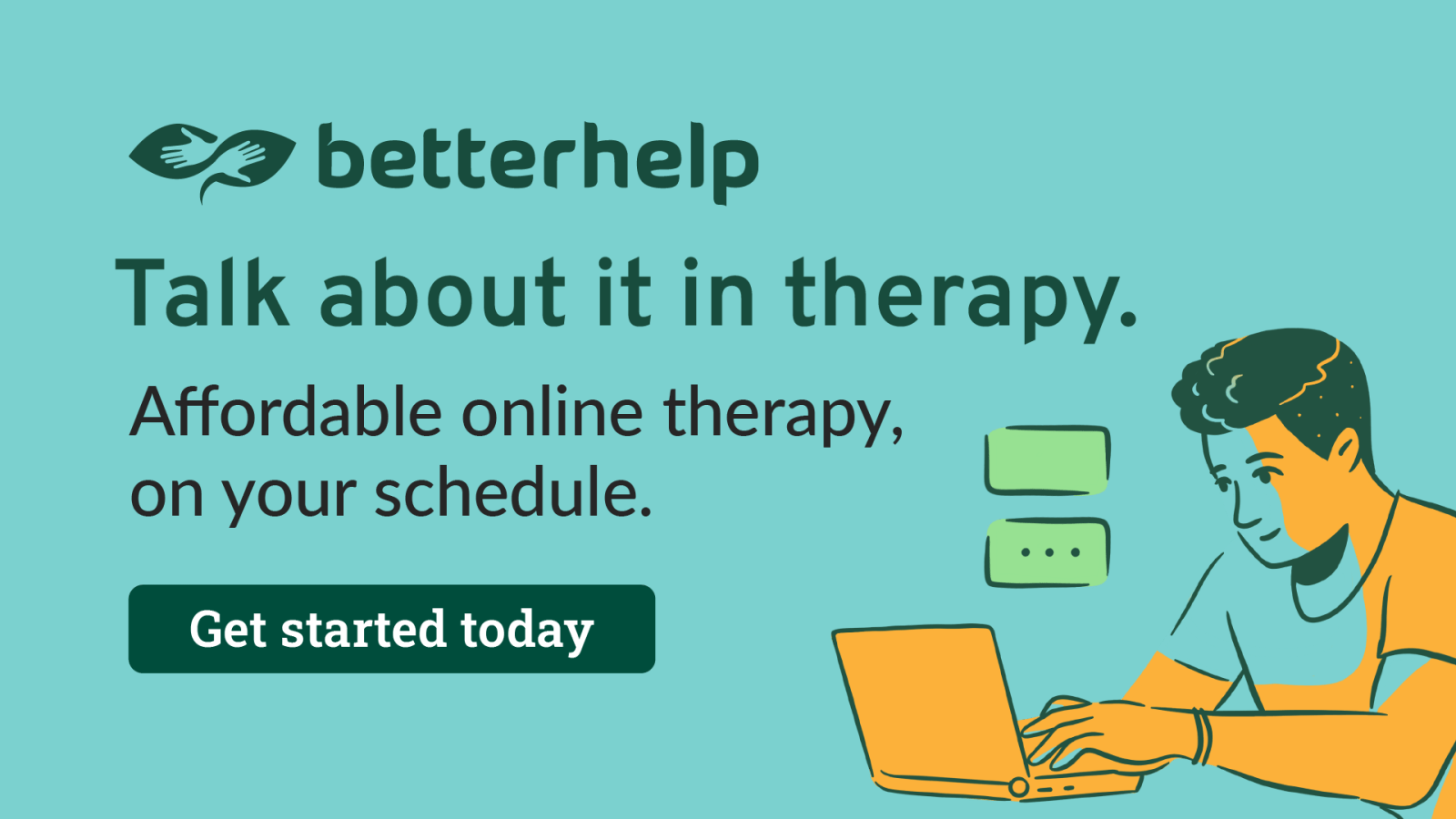As a BetterHelp affiliate, we receive compensation from BetterHelp if you purchase products or services through the links provided
Most therapists currently use cognitive behavioral therapy, or CBT for short, as a treatment for their patients. But what principle underlies cognitive behavioral therapy?
The basic principle behind cognitive behavioral therapy is that many of the issues with our mental health are learned behaviors. The idea behind CBT therapy sessions is to unlearn those behaviors, and many people find that cognitive behavior therapy is one of the most effective forms of therapy.
This article will describe what principle underlies cognitive behavioral therapy and explain how the process works.
Cognitive Therapy Believes Behaviors Are Learned
Many books have been written on how CBT aims to deal with negative thoughts. This means that we aren’t going to tell you everything about the core beliefs of CBT sessions. However, we can give you an overview.
The core tenet when it comes to what principle underlies cognitive behavioral therapy is the fact that behaviors are learned. In CBT, everything we do is a combination of thoughts, emotions, and behavior.
CBT teaches patients that the following happens:
- A person has negative thoughts.
- These negative thoughts lead to negative emotions.
- These negative emotions lead to undesirable behaviors.
Let’s give you an example of how this works.
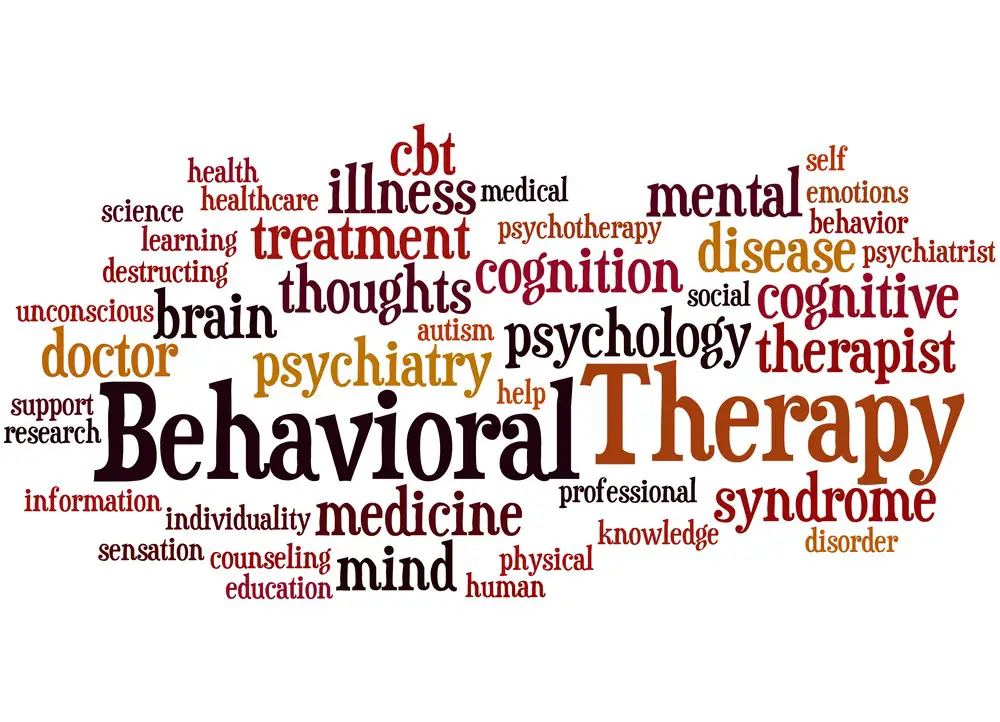
How Bad Thoughts Lead To Negative Behaviors
Let’s give you a simple example related to social anxiety. However, as you will understand, CBT can help treat many mental health conditions, even post-traumatic stress disorder.
Let’s say that you suffer from social anxiety. Something happened in your life; perhaps you were ridiculed in a social situation, which has resulted in you being wary of interacting with people in certain situations. The following process will then happen.
You Have The Negative Thought
The first thing a person will deal with is a negative thought. This is a profoundly rooted thought that essentially controls a person’s behavior.
In the eyes of CBT, it doesn’t matter too much where this thought came from. The idea is that it exists, and these negative thoughts influence the emotions that you are dealing with.
In the case of social anxiety, these thoughts may be down to a poor experience in a social setting. For example, if you were ‘made fun’ of giving a speech.
The Negative Thought Creates Negative Emotions
This negative thinking leads to you dealing with strong emotions. This may, for instance, be fear. It may be sadness. It may be anger.
Again, the emotions don’t matter too much. What matters is those thoughts are leading to them.
The Negative Emotions Lead To Negative Behavior
The negative emotions are not going to exist in a bubble. They are going to influence the way that you behave.
In the case of social anxiety, this may mean that you avoid the social situation entirely or, perhaps, try and make excuses for getting out of it.
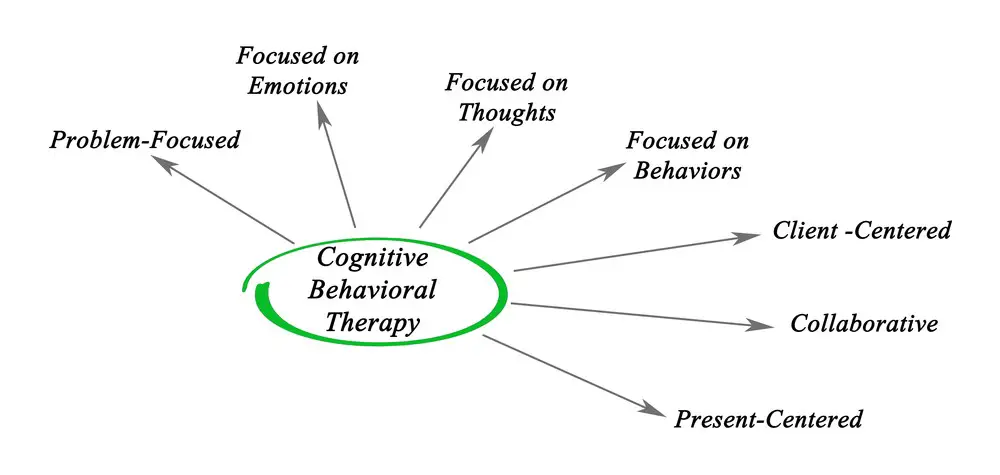
How CBT Aims To Deal With This
CBT therapy ensures those toxic thoughts don’t hang around for long. By removing that dysfunctional thinking (i.e. turning the negative thinking into more positive), the negative behaviors are controlled.
CBT is about getting a person out of unhelpful thinking patterns. We will discuss this in a bit more depth shortly.
Where CBT Believes These Negative Thoughts Come From
CBT doesn’t think too hard about where the negativity is coming from in a person. It will play a role and likely be discussed in CBT sessions. However, the only thing that matters at the end of the day is that a patient’s life experiences influence a person’s behavior.
CBT therapists know that a person cannot change their past. However, they can change the future, and coping mechanisms can help to deal with mental illnesses.
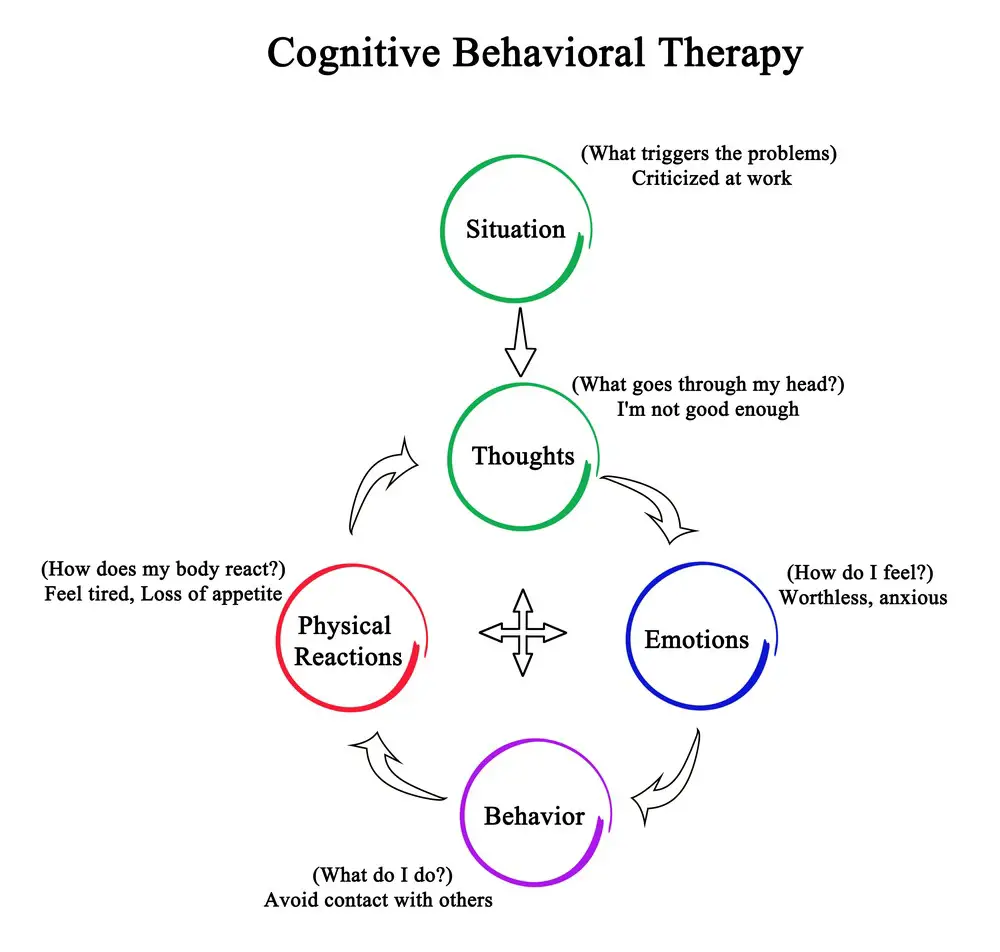
CBT Teaches Patients How To Identify Ways To Deal With Dysfunctional Thoughts
This is where things can get pretty complicated; how a therapist does this part is up to them. However, the core beliefs of CBT are unchanged here. It is about eliminating the thoughts that ultimately lead to dysfunctional behavior.
CBT initially emphasizes a person acting as their therapist. This isn’t that the patient will come up with their treatment technique. Instead, it is more that there will be talking therapy focused on listening to the patient.
Along the way, the therapist will give various prompts encouraging people to think about how their negativity impacts their way of life. By acting as their therapist, the patient can identify that their thoughts may not always have the most solid reasoning behind them.
If the patient can quickly identify automatic negative thoughts, there is a chance that this can lead to behavioral changes.
What Are Key Cognitions?
CBT focuses on crucial cognition. This is just a fancy term for a person’s thought processes. Most thoughts should be logical. People should be taking rational perspectives on things. However, as we all know, mental health problems can disturb the patient’s current thinking patterns.
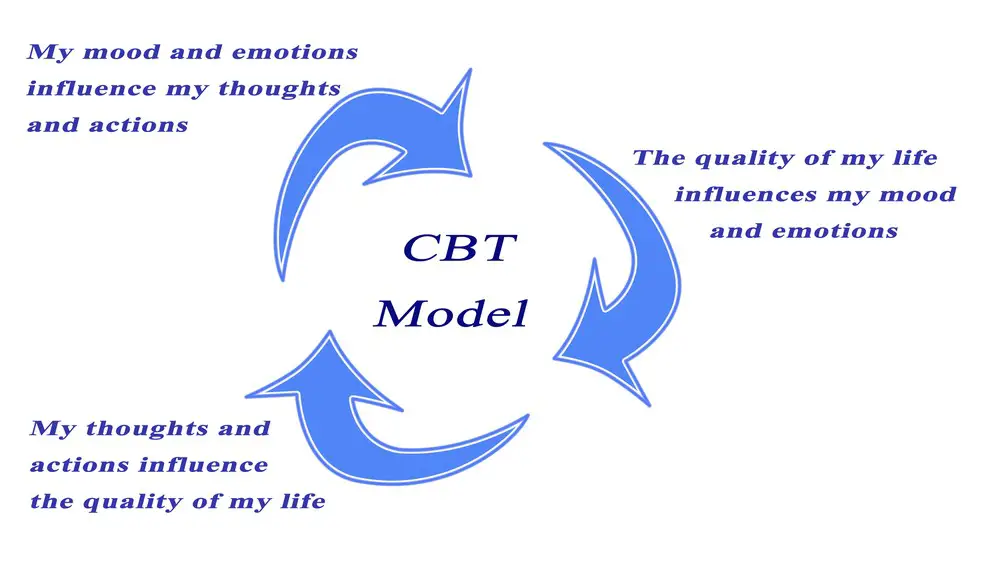
How CBT Encourages Patients To Think About Their Key Cognitions
CBT effectively treats negative thinking when the patient can develop problem-solving techniques.
For a patient to think about their dysfunctional thoughts, they need to expand how they think.
Through a structured treatment plan, the therapist will get the patient to think beyond their rigid beliefs i.e. a laser-focused negative thinking pattern. Instead, the therapist will use various techniques to encourage the patient to think more about the broader picture.
Let’s go back to the social anxiety situation that we discussed before.
How CBT Works With Social Anxiety
Let’s say a person has social anxiety. They have a rough idea about what caused it.
The therapist may ask what the issue is during the initial treatment sessions. The patient expresses that they have negative thinking patterns. It is important to note that CBT requires active participation and teamwork. If the patient is unwilling to discuss their thought processes, things cannot work. Thankfully, most therapists know how to build a solid, trusting relationship.
As the patient discusses why they think negatively, the CBT therapist will drop hints about expanding their thinking. For example, they will encourage the patient to think that just because something terrible happened in the past, it may not necessarily happen again. It is unlikely to happen again.
The therapist tries to convince patients that they are making dysfunctional assumptions about a situation. They are making the patient realize that perhaps by being stuck on that one part of negativity, they are doing themselves an injustice. They are creating problematic behaviors when there is no need to do so.
The belief system can change as the patient learns more about their cognitive distortions. They will realize that they don’t need to think negatively. They will learn that it becomes easier to deal with the problem when faced with a situation that usually triggers that negativity.
Research suggests that CBT is incredibly effective when used by the right therapist.
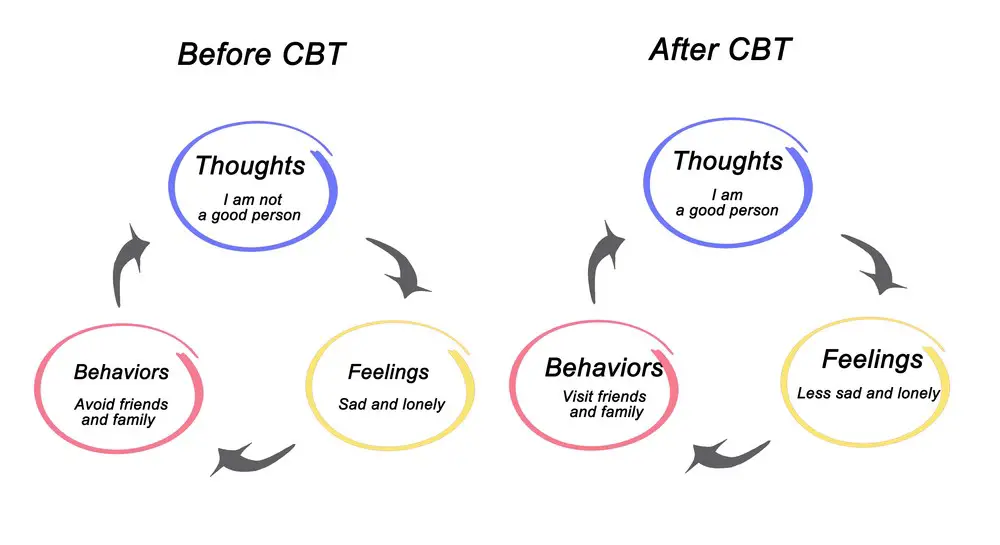
When Patients Identify Key Cognitions, They Can Unlearn Their Negative Behaviors
During the DBT session, the therapist creates behavioral experiments. Most CBT therapists may not be talking all that much during the therapy. However, they may drop hints while the patient is talking e.g., ‘Why do you think that happens?’ or ‘What do you think would happen if you put yourself in the situation?’
By conducting these behavioral experiments and encouraging the patient to think more about the big picture, the CBT treatment will allow the patient to identify coping mechanisms.
When a person knows how their brain works, they will learn what is triggering their bad thoughts in the first place. If they know what is causing those thoughts, they can stop them in their tracks. For example, they may think, “Oh, nothing bad is going to happen in this situation,” or “if I do this, then nothing will go wrong.”
If the patient quickly identifies their negative patterns, it can prevent relapse. Unfortunately, many people who undergo mental health therapy are unlikely to be fully cured. However, CBT emphasizes relapse prevention teaching, and if patients learn how to manage their thoughts, they find tackling the world a little bit easier.
Can CBT Work For All Mental Illnesses?
Unfortunately, no.
Cognitive behavioral therapy is excellent for conditions that may be a product of the environment e.g. social anxiety, or conditions that the environment can worsen, e.g., depression. However, not every mental illness can be dealt with through cognitive behavioral therapy. This, mainly includes severe mental illnesses.
That being said, even the basic principles of CBT can be used to treat many more severe mental illnesses alongside specific medication and other forms of therapy.
 The Heart of CBT: A Brief Overview
The Heart of CBT: A Brief Overview
CBT focuses on unlearning harmful behaviors and thought patterns to improve mental well-being. It’s one of the most effective therapies out there.
Do You Need CBT? 5 Telltale Signs
- You’re stuck in negative thought loops you can’t break.
- Emotional reactions feel overwhelming and extreme.
- Daily stressors easily trigger anxiety or depression.
- Relationship conflicts are a constant struggle due to communication issues.
- Your coping mechanisms are unhealthy, like substance abuse or emotional eating.
Setting Sail: Goals to Aim for in CBT
- Develop healthier thinking patterns.
- Learn effective coping mechanisms for stress and emotional triggers.
- Improve emotional regulation.
- Enhance communication skills for better relationships.
- Understand the root causes of your emotional reactions.
Navigating Success: How to Recognize Progress in CBT
- A noticeable decline in your symptoms of anxiety, depression, or other issues.
- Improved relationships and social interactions.
- A greater sense of control over your thoughts and emotions.
- Reduced reliance on unhealthy coping mechanisms.
- Enhanced problem-solving skills and better decision-making.
CBT can be a life-altering experience when applied effectively. Recognizing progress will become an uplifting journey if you see the signs and set clear goals.
Conclusion
CBT is one of the essential therapeutic techniques in psychology. The core underlying principle in cognitive behavioral therapy is that most negative behaviors result from negative thinking. By stopping that negative thinking from happening, the behavior can be shaped.
The vast majority of therapists are currently using CBT. This means that if you use a therapist, they will guide you through the CBT process. However, do remember that CBT requires active participation. If you do not participate, you won’t get anything out of it.
- Stress Management: What is the Relationship Between Stress and Addiction? - June 28, 2024
- Exploring Techniques to Maintain a Healthy Lifestyle without Drugs - May 28, 2024
- How Acupuncture Helps Treat Chronic Fatigue Syndrome - May 28, 2024
This site contains affiliate links to products. We will receive a commission for purchases made through these links.

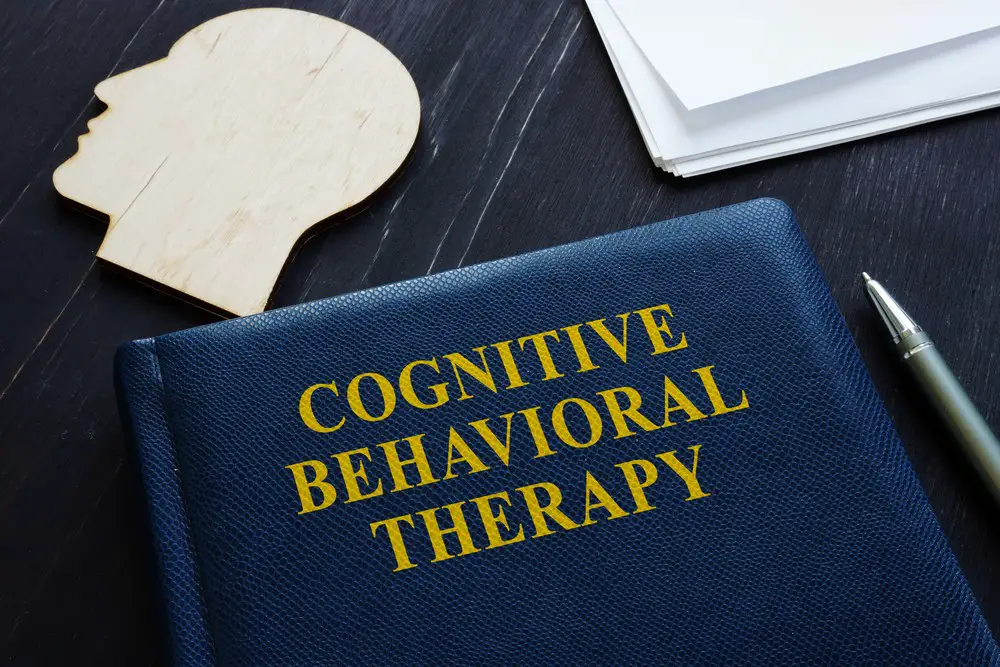
 The Heart of CBT: A Brief Overview
The Heart of CBT: A Brief Overview